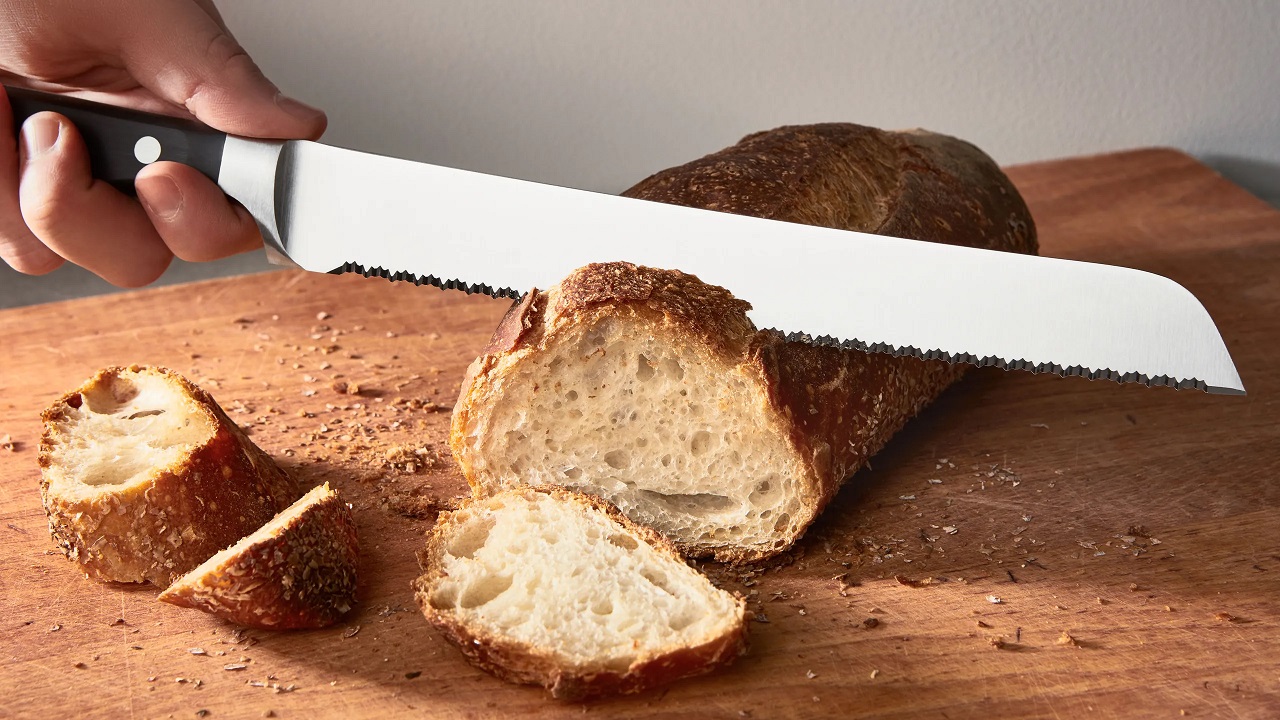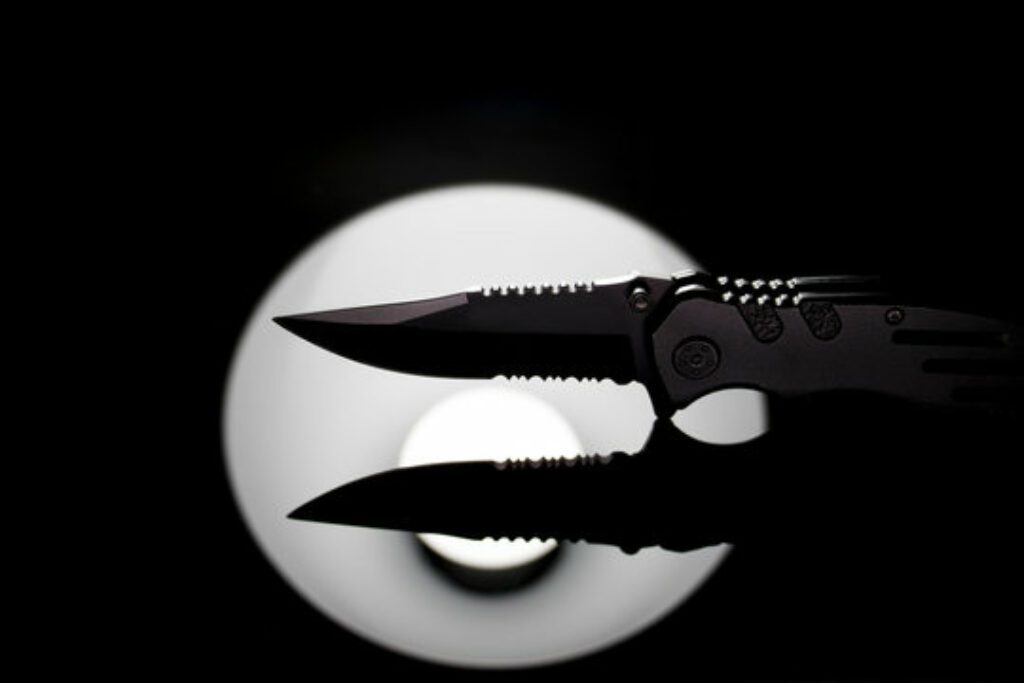


Are you someone who loves spending time in the kitchen and preparing delicious meals for your loved ones? Chopping is often the first step in preparing a delicious meal. Whether you’re making a salad, stir-fry, or soup, cutting your ingredients can make all the difference in the final dish.
As a cooking lover, I completely understand how frustrating it can be when your knives are dull, and chopping becomes a real struggle. With a sharp knife, chopping, slicing, and dicing becomes a breeze, making your time in the kitchen more enjoyable and efficient.
Whether you’re a professional chef or a home cook, having a sharp steel knife is essential for efficient and enjoyable cooking. Knowing how to sharpen a serrated knife properly is crucial for any home cook or professional chef.
Why Do Serrated Knives Become Dull?
Personally, I use serrated knives in my kitchen. I’ve noticed that they tend to become dull over time with regular use. I’ve had to replace several of my favorite serrated knives because the teeth wore down and the blade lost its ability to cut smoothly through bread, tomatoes, and other foods.
From my personal experience, I have learned that serrated knives require proper maintenance and storage to keep them sharp and effective. It’s important to avoid storing them in a drawer with other utensils where they can jostle around and cause the serrations to become damaged or misaligned.
If the blade of a serrated knife is exposed to moisture or any other acidic substances, it can cause corrosion on the blade and make it less effective.
How to Sharpen a Serrated Knife
Sharpening a serrated knife can be a bit tricky, as I learned through my own experience. I learned that you couldn’t simply use a traditional knife sharpener or even most electric knife sharpeners due to the unique shape of the blade. While some high-end electric sharpeners do feature a serrated knife slot, they may need to be more precise.
After researching, I discovered that a ceramic honing rod is the best tool for manually sharpening a serrated knife. It’s harder than a steel honing rod, so it will remove some of the material from the blade’s edge, giving it a sharpening effect. The shape of the rod is designed to fit inside the serrations of the blade, allowing you to sharpen the knife tooth by tooth.
Steps to Sharpen a Serrated Knife
- Start at the back end of the knife and place a ceramic sharpening rod in the serrated grove or gullet. Make sure to position the rod to match the beveled angle of the chiseled cut in the gullet. The gullets of a serrated knife, make the bevel easier to see, so it shouldn’t be too difficult to find the correct angle. Hold the sharpening rod flush with the bevel to ensure the correct angle.
- Slide the rod through each gullet toward the cutting edge of the blade. Repeat this step for each gullet, but only take a few passes for each one. Resharpening the gullets with a honing rod also helps to re-establish sharp tips of the teeth, which is important because the teeth make the initial entry into the material and begin the cut.
- After using the ceramic rod to sharpen each gullet, it’s time for the final step. You may feel some minute amounts of steel, known as burrs, along the backside of the blade. Remove these burrs by moving the flat side of the knife across the surface of the fine-grit finishing stone of your sharpening stone set.
Honestly, sharpening a serrated knife is not as easy as sharpening a regular chef’s knife, but with a bit of practice and the right tool, like a ceramic honing rod, it can be done effectively and further you can use it with any of these Kitchen prep station.
Others Ways to Sharpen a Serrated Knife
I recently decided to experiment with different ways to sharpen my serrated knife. I started with a piece of cardboard. I found that running the knife through the cardboard multiple times helped sharpen the serrated edge’s individual teeth. While this method did work to some extent, the results could have been better.
Then I tried using a sharpening stone. As before, I positioned the rod in each gullet and worked on the bevelled angle of the chiselled cut in the gullet. This procedure was far more effective in sharpening the knife. I made a few passes around each gullet and finished by removing burrs with the knife’s flat edge across the finishing stone’s surface.
Finally, I used a Dremel to sharpen the knife. I found this method to be the most effective because the Dremel was able to grind down the serrated edge’s teeth to a sharp point. However, it did take some skill and precision to avoid damaging the blade.
Overall, I found that using a sharpening stone or a Dremel was the most effective way to sharpen a serrated knife. While the cardboard method did work to some extent, it was less effective than the other two methods.



Other Best Serrated Knife sharpener
Bottom Line
Well, sharpening a serrated knife may seem like a daunting task, but with the right technique and tools, anyone can do it like a pro. By following the steps outlined in this guide and taking proper care of your serrated knife, you can maintain its sharpness and extend its lifespan, ensuring that it remains a reliable tool in your kitchen for years to come. Remember, a sharp serrated knife is more effective at cutting through tough materials and safer to use than a dull blade. So, take the time to sharpen your serrated knife and enjoy the benefits of a well-maintained tool in your cooking adventures.
FAQs
Can you sharpen a serrated knife with a regular knife sharpener?
Sharpening a serrated knife with a regular knife sharpener is not recommended due to the unique shape of the blade. Most traditional electric knife sharpeners are designed to sharpen straight-edged blades, which may cause serrated teeth to be damaged.
How Do I Store My Serrated Knife?
It is best to store your serrated knife in a knife block or on a magnetic strip to protect the blade’s serrations. Avoid storing it in a drawer where it can bang against other utensils and become damaged.
How much does it cost to Sharpen a Serrated Knife?
The cost of knife sharpening varies depending on several factors, such as the type of knife, the condition of the blade, and the sharpening method. On average, professional knife sharpening services can range from $5 to $15 per knife, while some places may charge more for specialty knives or if the blade is in particularly bad condition.










